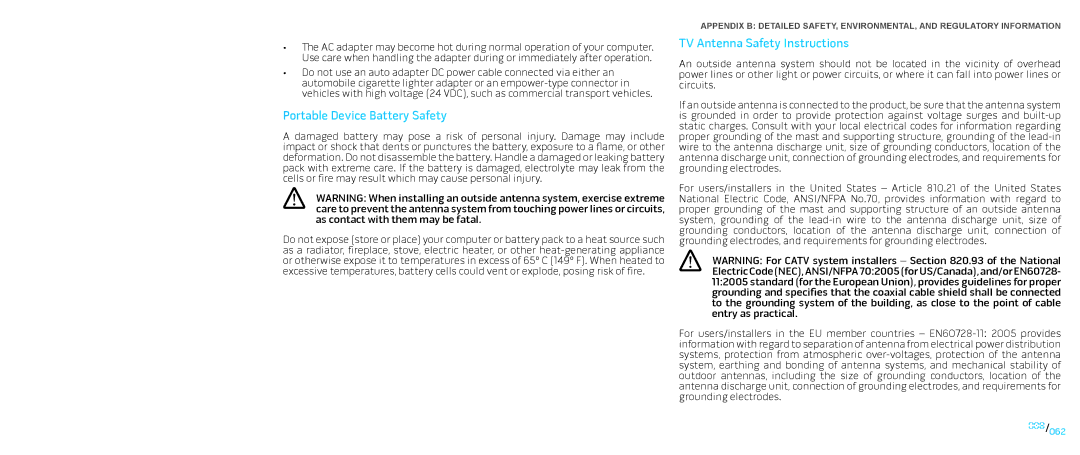
•The AC adapter may become hot during normal operation of your computer. Use care when handling the adapter during or immediately after operation.
•Do not use an auto adapter DC power cable connected via either an automobile cigarette lighter adapter or an
Portable Device Battery Safety
A damaged battery may pose a risk of personal injury. Damage may include impact or shock that dents or punctures the battery, exposure to a flame, or other deformation. Do not disassemble the battery. Handle a damaged or leaking battery pack with extreme care. If the battery is damaged, electrolyte may leak from the cells or fire may result which may cause personal injury.
WARNING: When installing an outside antenna system, exercise extreme care to prevent the antenna system from touching power lines or circuits, as contact with them may be fatal.
Do not expose (store or place) your computer or battery pack to a heat source such as a radiator, fireplace, stove, electric heater, or other
APPENDIX B: DETAILED SAFETY, ENVIRONMENTAL, AND REGULATORY INFORMATION
TV Antenna Safety Instructions
An outside antenna system should not be located in the vicinity of overhead power lines or other light or power circuits, or where it can fall into power lines or circuits.
If an outside antenna is connected to the product, be sure that the antenna system is grounded in order to provide protection against voltage surges and
For users/installers in the United States – Article 810.21 of the United States National Electric Code, ANSI/NFPA No.70, provides information with regard to proper grounding of the mast and supporting structure of an outside antenna system, grounding of the
WARNING: For CATV system installers – Section 820.93 of the National Electric Code (NEC), ANSI/NFPA 70:2005 (for US/Canada), and/or EN60728- 11:2005 standard (for the European Union), provides guidelines for proper grounding and specifies that the coaxial cable shield shall be connected to the grounding system of the building, as close to the point of cable entry as practical.
For users/installers in the EU member countries –
062/062
